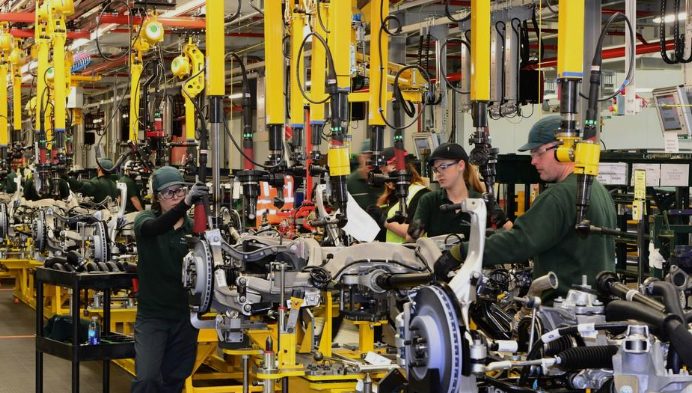What Is a Franchise, And How Does It Work? – Examples, Benefits & More

What is a franchise? – If you want to start with a franchise, you will be able to get the benefits of an already successful brand and an in-demand product. Furthermore, you can also receive various tools and guidance from the franchisor, who wants to see you succeed in the local area that you are to operate in. All you have to do is pay an amount to the franchisor and get the licence to operate under its name.
In this article, you will learn about franchises and get an understanding of the working of a franchise. Furthermore, you will also learn some of the major characteristics of a franchise. Next up, we will discuss the major types of franchises with examples. Finally, you will learn the essential pros and cons of a franchise for both the franchisee and the franchisor.
What Is A Franchise?

According to Investopedia,
“A franchise is a type of license that grants franchisee access to a franchisor’s proprietary business knowledge, processes, and trademarks, thus allowing the franchisee to sell a product or service under the franchisor’s business name. In exchange for acquiring a franchise, the franchisee usually pays the franchisor an initial start-up fee and annual licensing fees.”
When a business wants to increase its geographical reach for a higher share of the market, one of the ways it can do this is by franchising its brand name and product. The franchising entity is called a franchisor, while the individual or group that buys the franchise from the franchisor is called a franchisee.
Read More: Entrepreneurship – Definition, Meaning, Scope, And More
Understanding A Franchise – How Does It Work?

According to Wall Street Mojo,
“Franchising definition refers to a license or an agreement between two parties, which gives an individual or an organization (the franchisee) the right to market goods and services using the trading techniques and brand name of another organization known as the franchisor. Technically, the contract binding the franchisor and franchisee is the ‘franchise.’”
The franchisee basically gets the right to sell the franchisor’s goods while using the business model of the franchisor. Any advertisement or marketing efforts of the franchisee are set by the franchisor in most cases.
What Are The Major Types Of Franchises?

As per the observations in an article on Hubspot,
“A franchise involves a mutually beneficial relationship where the franchisor (company) offers an array of support to the franchisee in exchange for recurring royalty fees. Through this relationship, the franchisee (individual) can expand the parent company’s reach and get more of the commercial product to more customers.”
However, to understand franchises better, you will need to get an idea of their types:
1. Product Franchise
Here, the franchisee makes use of the brand name, products, trademarks, etc. of the franchisor. Here, the main brand allows third-party operators to market and distribute the products of their brand by signing a contract.
Furthermore, the franchisee has to pay an initial fee to the franchisor. However, the franchisor is in control of the way in which the franchisee distributes the product. An example of a product franchise is any automobile producer or a soft-drink manufacturer.
2. Business Format Franchise
This type of franchise uses a particular business format, as well as the best practices of the franchisor, to produce the product. The franchisor basically comes with an established business model and guides the franchisee with ways to launch and operate the business.
The biggest examples of such types of franchises include fast-food sellers and restaurants like McDonald’s, KFC, Subway, etc.
3. Manufacturing Franchise
In this type of franchise, the franchisor provides the franchisee with the rights to produce products under its trademark and brand name. Some of the food and beverage companies also maintain their business with this model.
Biggest Pros And Cons Of A Franchise

The following are some of the major pros and cons of franchises which you must get an idea of:
Pros
Here are some of the major pros of a franchise:
- Since the franchisor’s network increases, it helps to increase the goodwill of the brand.
- As franchisors get bigger, they tend to know the different needs and demands of a large number of customers.
- Franchisors also tend to get valuable feedback based on the choices of customers and the popularity of a product, which further helps them to cater better.
- The franchise can expand its distribution chain pretty quickly.
- The franchisee does not need to promote the product a lot since the brand’s name is getting more famous.
- Since the franchisee sells its products under a well-established brand, the risk for the franchisee becomes lower.
- As the franchisee makes a financial investment in the franchise, it becomes a source of capital for the brand.
- The franchisor can get local knowledge of the business environment with the help of the franchisee.
- For franchisees, the rate of success is higher since they work on a proven business model.
Cons
Here are a few cons of franchises that you must be aware of:
- The franchisor has to depend on the performance of the franchisee for success in the local area. If the franchisee is not capable enough, it can tarnish the business image of the brand.
- To help franchisees set up business in the local area, the franchisor needs to provide valuable resources.
- As franchisees get a lot of details from the franchisor, there is a risk of information leaks to competitors.
- For the franchisee, there are a lot of restrictions from the franchisor since the former must stick to the tried and tested business plan. They also need to stick to a fixed marketing and advertising model.
- If the brand is successful and trendy, to get rights for a franchisee, one must pay a substantial amount for the franchise.
Read More: What Are The Different Types Of Entrepreneurship? – Take A Look
Wrapping Up
Hope this article was helpful for you in getting a better idea of what is a franchise and how it works. You can see from here that although there are many advantages and disadvantages, franchises are popular with some of the big brands.
If you are looking to take up a franchise from a renowned franchisor, consider doing research, and find out whether it fully suits your local area and demands or not. Do you have any more to add to this article regarding franchises? Share your ideas with us in the comments section below.
Read Also:













